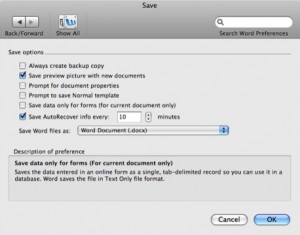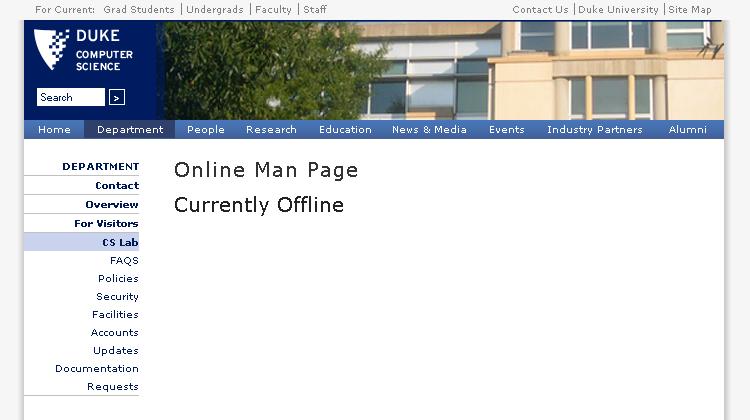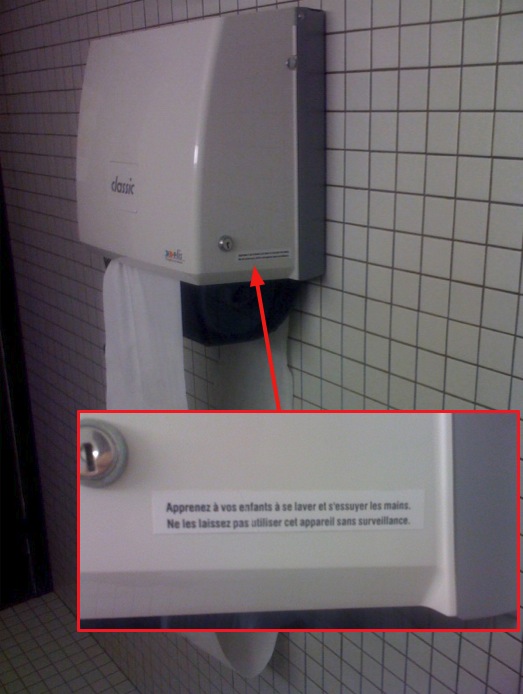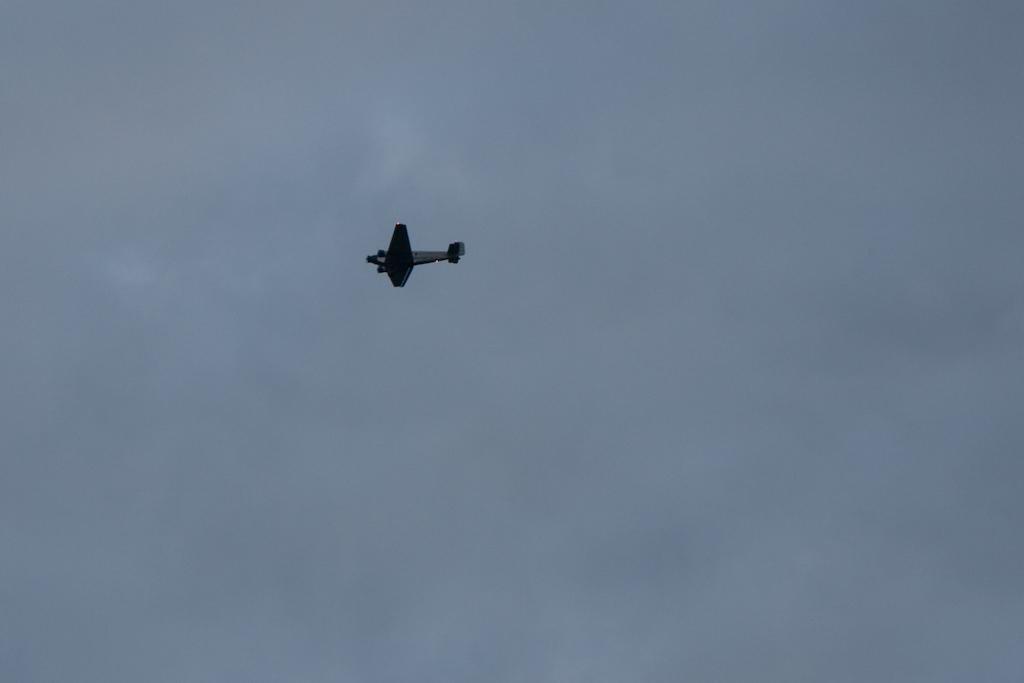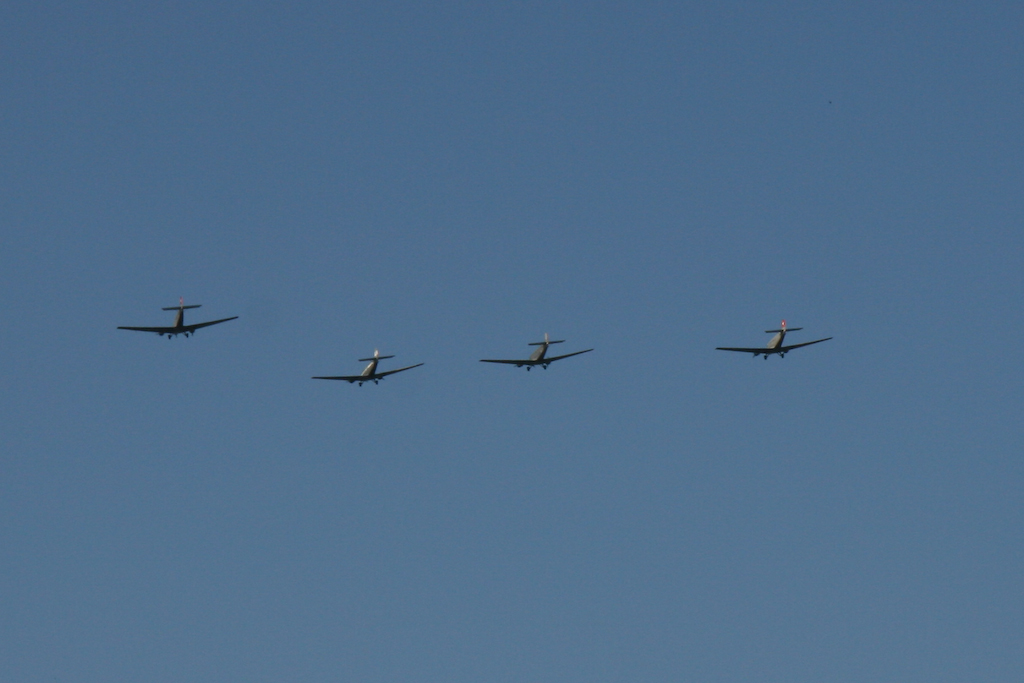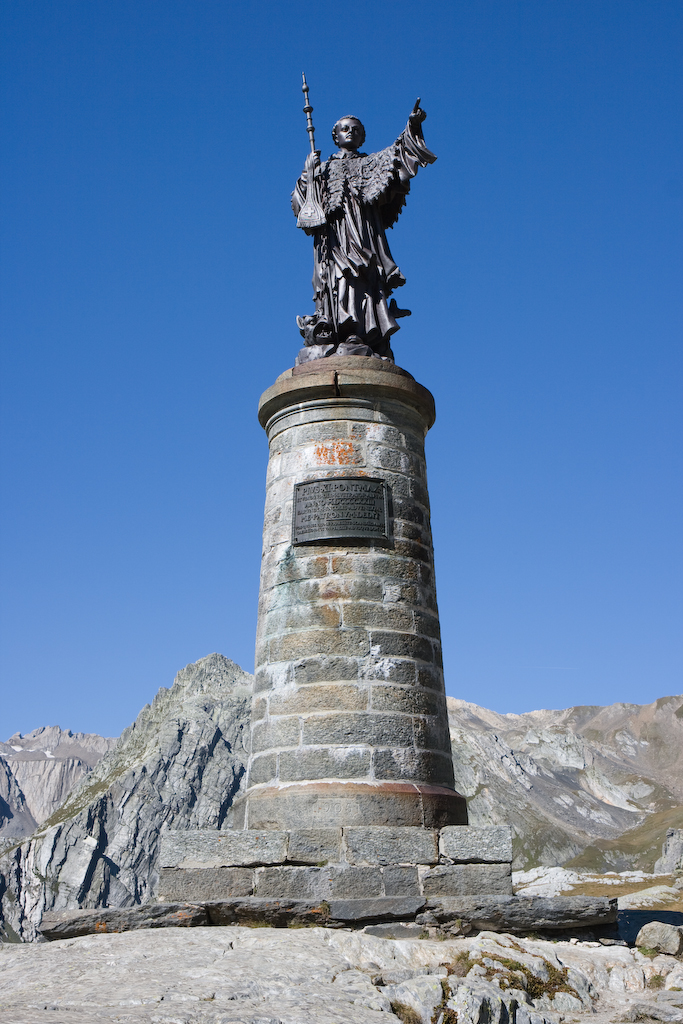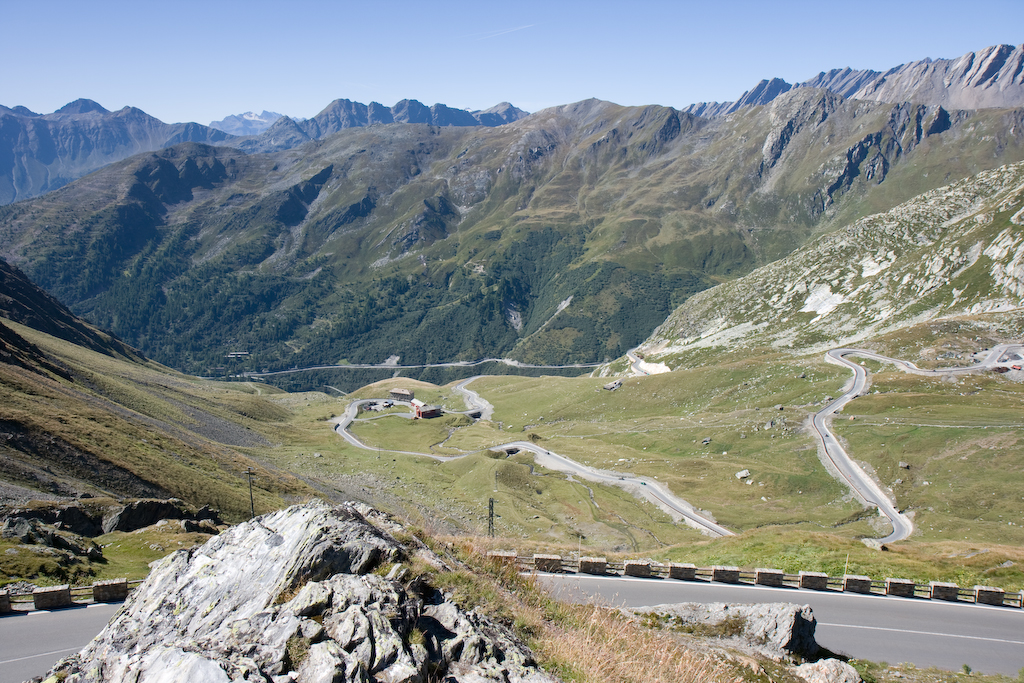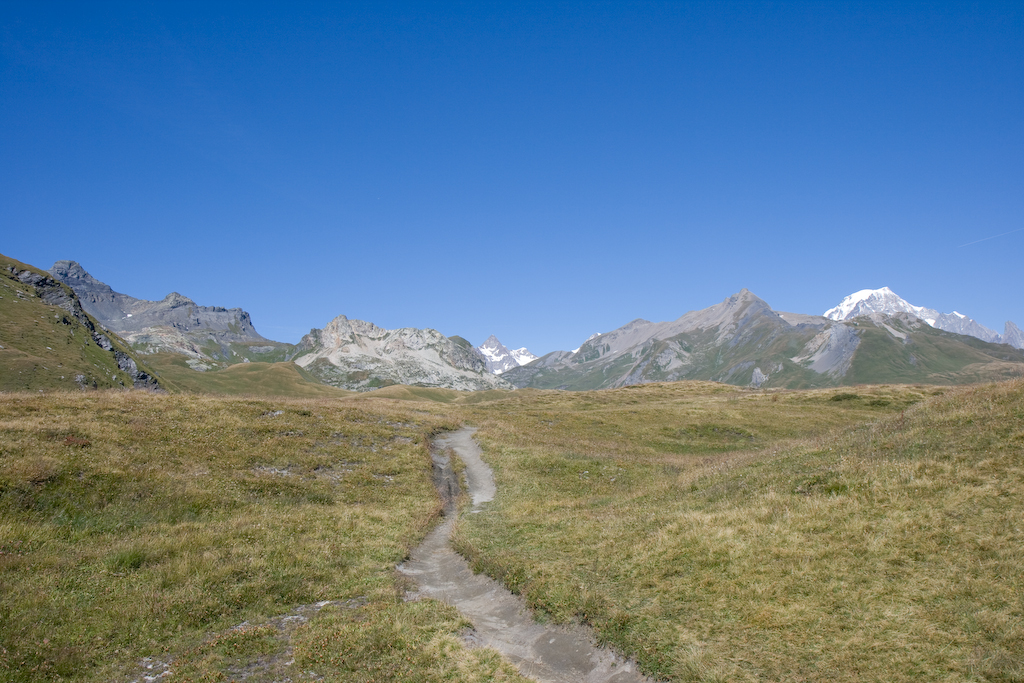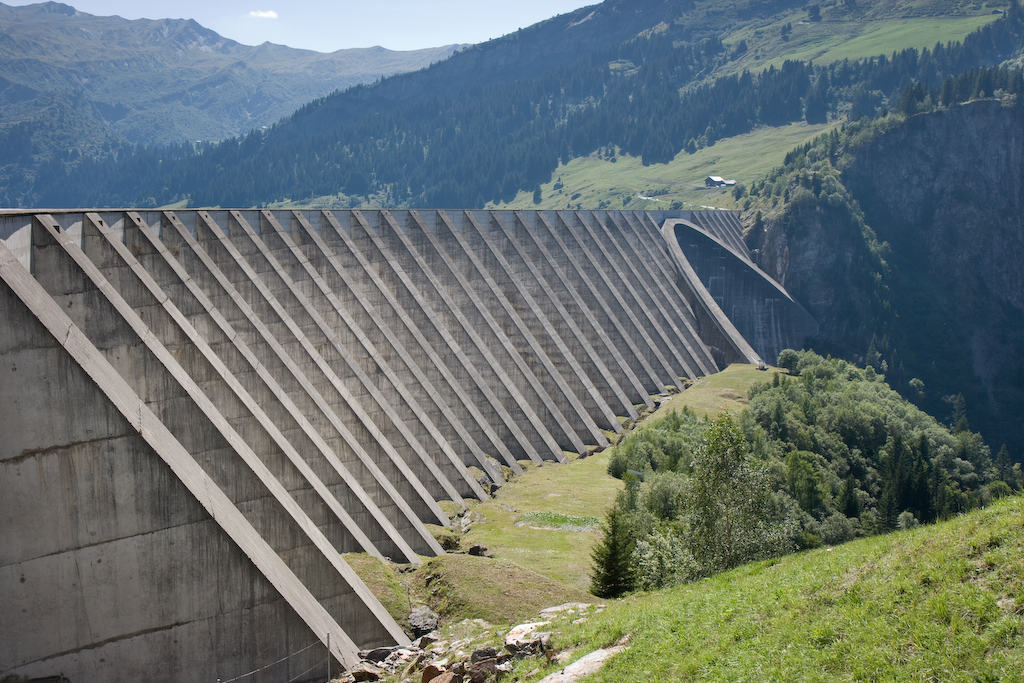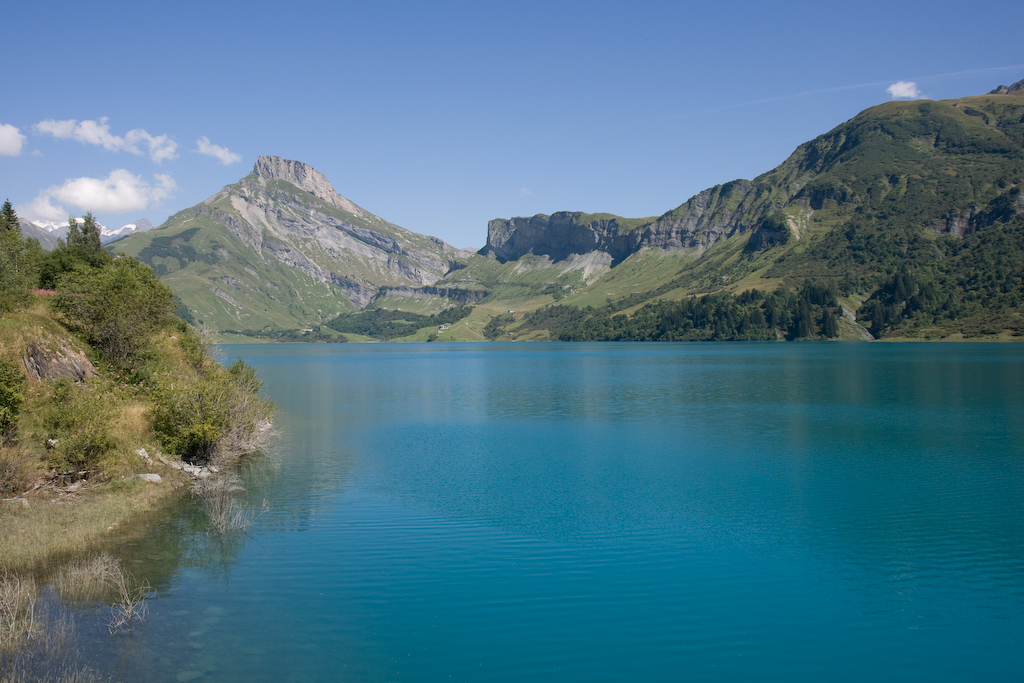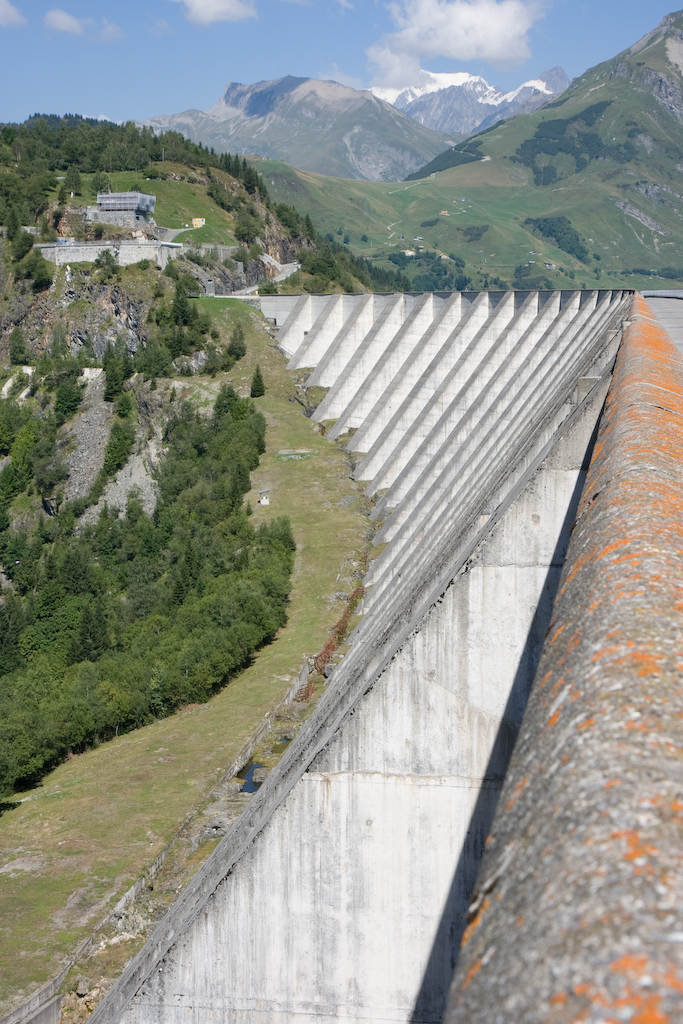A little bit of history (Word 5.1 1992)
With Microsoft Word 5 there was a small little option that allows you to tell Word to save every open document at a regular time interval (15 minutes for example). How this functionality was implemented was trivial. It only performed a regular “Save” or “Save As…” at the parameterized time interval. This worked nicely and everything was in order.
With such an implementation two goals where reached:
- If the Word crashed, you will have, in the worst case, lost 15 minutes of work
- If you made a mistake and forget to save your work, you will have, in the worst case, lost 15 minutes of work
Current time (Word 2008)
Somewhere in-between Word 5.1 and Word 2008 (I cannot say more precisely, because here, at home, we had such an upgrade path), this functionality didn’t disappear but the implementation changed. Now this functionality has been splited in two parts.
- The first one being fairly useless and called “Always create a backup copy” which as the name says only create a “Backup Copy of <your_document_name>” file for every document you created.
- The second one being “Save AutoRecovery info every:”. This option allows Microsoft Word to recover a file after a crash.
Everything seems to be in order, except that now we don’t have a protection against the user who quit Word without saving his whole day work (Yes it can happen, believe me).
Word Backup
Having recognized the problem and noticed that there is no “ready-to-use” solution, I decided to create a palliative solution. The provided piece of software reintroduces the old behavior of Word 5 with the newest version of it. An additional benefit of this script, when run on Mac OS X 10.5 or 10.6, is that you not only have access to the latest backup version but also to the history of it thanks to Time Machine.
Download
[update]The new version provided, logs the saved documents’ name under /Library/Logs/WordBackup.log[/update]

